Assuming you don't know what to search for, I'll give you this to read for starters.
What does "high current" mean here?
"high current" means that you can draw the maximum current provided from the input with a proper transistor
How is this circuit working as a zener regulator?
the transistor can provide constant emitter voltage, because it has constant base (reference) voltage. for more, read the next link.
What is the purpose of transistor here? How is it working?
Read this
What is the main component in the circuit diagram?
what do you mean by main? they are all required
What is the purpose of capacitor here?
Usually, the output capacitor is set for high current startup load and for further voltage smoothing
Why is the purpose of resistor here?
Read this and this
